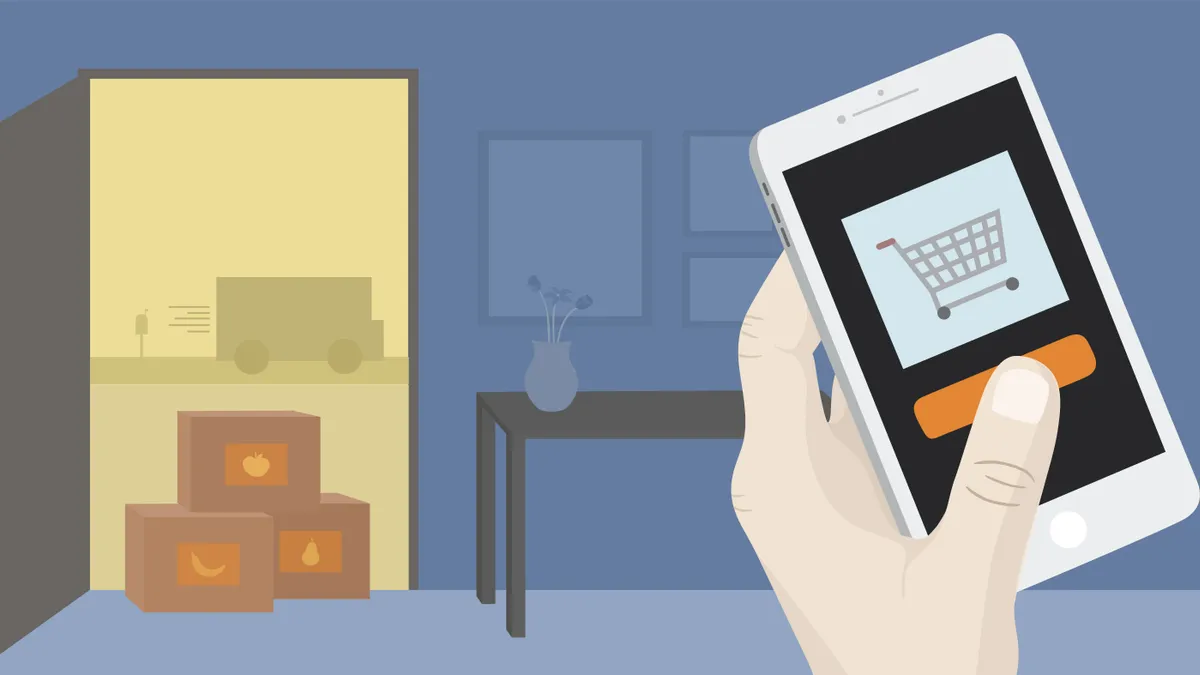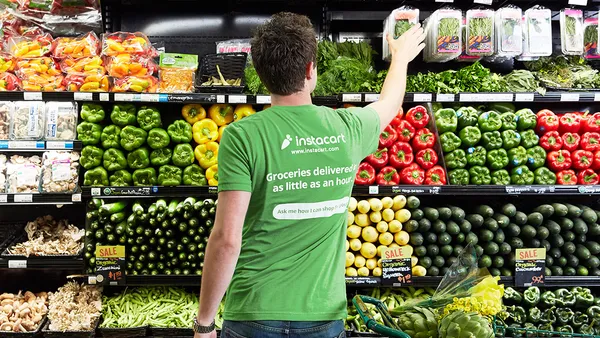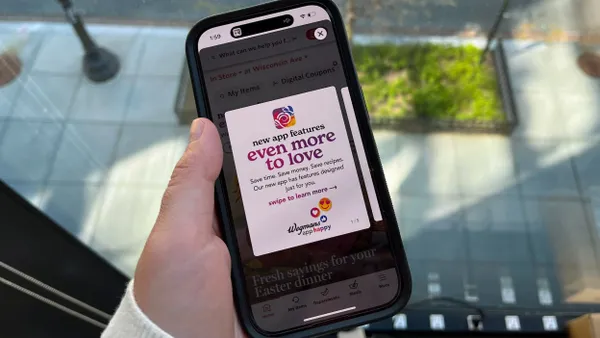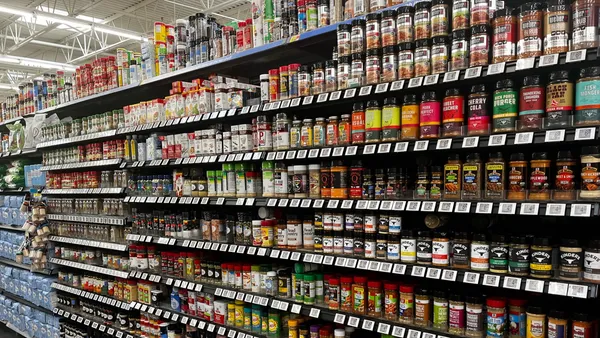Dive Brief:
- Adweek writes that grocers are trying a variety of tactics to provide the best grocery fulfillment solution for their customers, including working with third-party delivery platforms, offering pickup options, asking associates to make deliveries and experimenting with autonomous vehicles.
- Analysts say this “see what sticks” approach is the result of an unclear understanding of what consumers want and are willing to pay as retailers try to make pickup and delivery a profitable slice of their business.
- Price point remains an impediment to online grocery success. Finding a price consumers are willing to pay that is still profitable for retailers is an ongoing challenge, but educating consumers about the benefits of the service will be key to driving sales.
Dive Insight:
Grocers are implementing a variety of promotions to boost online shopping baskets and rope in new customers, whether it is discounts, personalized offers, comprehensive customer service or some combination of all of these. Fulfillment methods also vary widely. Many grocers have teamed up with Instacart or Shipt, while others have established their own programs or teamed up with smaller e-commerce vendors.
Experimentation in a burgeoning field like e-commerce is natural, but as more consumers do more shopping online, grocers need to have a secure strategy in place while also looking to the future.
Technology firm RichRelevance's just-released Digital Grocery Survey: 2018 Holiday Edition found that twice as many people will purchase groceries online this holiday season. The survey also found that consumers have strong opinions on which online promotional tools are most helpful. Half of the respondents surveyed said online personalized offers or discounts are helpful, followed by fast, accurate search results on a grocer’s site. That customer service wish list is likely to extend beyond holiday shopping.
“We’re hearing directly from consumers that personalization and relevance define a positive, valuable online shopping experience," Michael Ni, CMO, RichRelevance, said in a statement. "As companies race to differentiate and establish their brands in grocery, these experience investments will be critical in determining market leaders."
Earlier this year Grocery Dive spoke with Phil Lempert, founder and editor of SupermarketGuru.com, about the seemingly haphazard strategies grocery stores are implementing when it comes to e-commerce. He pointed out that some retailers, like Kroger and Target, have made transformative acquisitions and are developing forward-thinking strategies. Many others, he said, are struggling to position themselves in the economically challenged space.
Lempert believes supermarkets need to develop a long-term plan that effectively balances click and collect and delivery and train people that it’s okay to make produce purchases online. He’s also a big believer in incentives – give shoppers discounts to get them to experiment.
Consumers have been slow to adopt online grocery shopping, due to factors like wanting to see fresh produce and meats before buying, however, there is evidence they are getting more comfortable with the idea. According to the Food Marketing Institute, online sales are predicted to capture 20% of total grocery retail by 2025, led by beverages, coffee, snack foods and breakfast foods. As fees for pickup and delivery come down, consumer adoption should continue to accelerate.
Given the importance of scale and innovation in online groceries, large players are set to benefit the most. Amazon has quickly expanded Whole Foods’ delivery to 63 cities in 35 states, while Walmart will offer delivery in 100 markets by the end of the year and currently offers free store pickup from 2,100 stores. A recent report from Deutsche Bank predicts the two retailers will command 36% of the online grocery market by 2025.
As grocers experiment to find the right match for their brand and customer, technology will continue to advance and change. The key will be understanding what advances will provide the best customer service experience possible. Once the customer needs — price, convenience, personalization, options — are better defined, brands that can check those boxes with the right technology to match, will find the most success with their e-commerce efforts.












